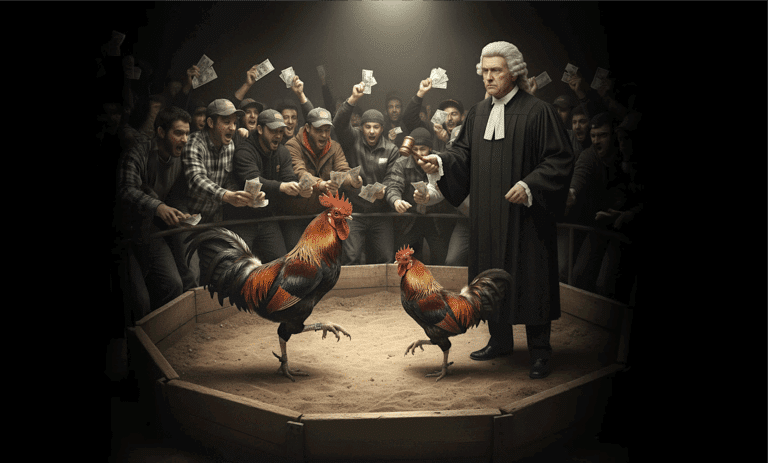Is modern conservatism unfriendly to the arts, or is it the other way around? Either way, they don’t get along particularly well. Canadian conservatives may shudder at the very mention. But they should get over it and start telling stories.
It’s no use, some may say. Hollywood is a nest of commies, so is the CBC, and don’t get us started on the Canada Council for the Arts. All a bunch of lefties who wouldn’t spit on conservative artists if they were on fire.
Right?
Shake a conservative awake at 3 am and ask him why there aren’t many famous conservative artists and he’ll probably tell you it’s because they’re shunned by the liberal arts clique.
Our brutally awakened insta-pundit would have a point. But it’s not the whole answer. I’m here to tell you another – possibly more important – reason why conservative artists aren’t being promoted is because they’re shunned by the conservative political clique.
And yes, I may well mean you.
I have spent the last two years trying to get conservatives of all stripes to devote more resources (time but especially money) to telling stories and fewer resources to politicking, with considerably less success than I was hoping for. And I’m not asking for the moon.
All I would like is a relatively minor tweak. Say someone gives $200 a year to conservative parties. How about instead they shift, say, $30 or $50 towards artistic pursuits? Imagine if one in four conservative party donors did that, how much more money would there be for artists to develop books, stories, movies, sculptures, paintings, video games, musicals and who knows what-all celebrating human ingenuity, the wholesomeness of family life or doing for small business folks crushed under government paperwork what Upton Sinclair did for meat factory workers?
Oh, hey. Maybe I’ll write that novel, just to see how many people buy it.
Whenever I talk about these things in public, people readily agree that we need to focus more on telling stories and not just abandon the field to liberals. We agree that Hollywood, popular music, TV, you name it, are promoting left-wing views. Heads nod vigorously when I mention the need to fight liberals and Liberals on that cultural battlefield. We all know that culture matters, that – in the late Andrew Breitbart’s apt phrase – politics is downstream of culture. And yet…
Conservatives continue to send money faithfully to parties that claim to be conservative, despite their recurrent lack of sustained success in, you know, electoral politics. And no, it won’t do to blame outside forces; Conservative parties aren’t making themselves appealing and that’s the reason they aren’t getting elected. But it’s also true that voters aren’t as receptive as they might be to conservative political ideas because all they’re hearing is conservative slogans, and not compelling conservative stories. Where’s the support for conservative artists telling Canadians conservative stories that they would actually enjoy hearing or showing them art they would enjoy seeing?
Yes, we have a few think tanks that sponsor essay contests. That’s great. We also have video contests here and there. But overwhelmingly these are about policy ideas and themes. Which makes them didactic. And while there is a proper and legitimate place for this sort of thing, they are not stories and will never be as popular with the not-already-converted as outstanding works of fiction can be. Why do I say this? Because didactic non-fiction essays only talk to your head, not your heart, that’s why.
Now don’t go saying artists are all lefties, that true conservatives don’t do that namby-pamby culture stuff. What about the George Orwell’s Nineteen Eighty-Four? John Wayne movies? Frank Capra movies? Old-time country music (or so my husband tells me)? Heck, even Pixar movies mostly have traditional values.
So why don’t we have many more Canadian conservative fictional works, paintings and sculptures celebrating what we hold dear? This question is terribly puzzling to me. Conservatives are supposed to be all about traditions. Christian conservatives, in particular, are supposed to be all about transcending our human existence and reaching out to eternity. We’re not supposed to be content with mere material success and not worry about where our souls are going. Yet most conservative politicians, activists and many supporters seem almost exclusively concerned with pocketbook issues, with the exception of some younger ones who display their creativity by putting together memes on social media explaining how much they despise Justin Trudeau.
I submit to you that’s the wrong way to go. I do believe we were put on this earth for a purpose that’s bigger and more meaningful than tweaking marginal tax rates. Tax rates matter. But they’re not the most important thing. And we don’t talk about the really important things. Instead we seem to stand for nothing but office. To the extent that we care about public affairs generally, it should be with a view towards making things better for our fellows in all kinds of ways, and not just about kicking those entitled red-tied swines out of office so we can take their place and get our own blue hands on that government booty.
We need to lift our noses from the daily grind and look up towards something bigger. We need to dream, hope, be inspired. We need to rest our eyes on beautiful art, let music fill our souls with joy and take time to ponder the meaning of a sculpture. We need to think about the mysteries and purpose of life on a regular basis. Otherwise we lose touch with the point of it all, and that contributes greatly to making us mightily unsuccessful in politics, too.
We need beauty, love, and magic in our lives, and art is one of the best ways to get it. And we need to be the kind of interesting, creative people that other people will admire and be drawn towards. In short, we need to look and feel happy and reasonably fulfilled, morally and metaphysically speaking. We can’t do that without art.
OK, but what constitutes conservative art? I’m so glad you asked, because that is possibly the easiest question of all. Conservative art is, roughly speaking, anything that’s not offensive or aggressively meaningless. That leaves us a lot of room to play, doesn’t it?
I was recently in Edmonton at the University of Alberta and saw a mesmerizing piece of public art. The sculpture, which shows a child looking at an adult with an empty middle section, is by an artistic couple who, from the looks of their website, don’t strike me as particularly red-meaty. But who cares what their political leanings are? Their art inspires me to reach for a larger meaning and I am happy to claim it as my own. This particular sculpture belongs to a public institution, and as such is a rare example of a government bureaucracy selecting good art. As a rule, privately commissioned art is better because the selection process is based on merit instead of some politically correct checklist. Just compare the glorious sculptures that adorn oil company office towers in Calgary with the ghastly public art that sullies a lot of civic infrastructure in Edmonton. Good on the energy firms and their shareholders for investing in good art. I wish we had more like this all over the place.

Calgarian Stephen Harper once famously suggested that fine arts and their glitzy galas don’t resonate with ordinary Canadians, and I’m sure that’s true. But most artists aren’t the tuxedo-and-tails-at-the-National-Arts-Centre type. They’re considerably less well-off than that, and often rely on subsidies or patronage to get by.
True conservatives of course would rather not have public subsidies for the arts, or not very much, so that leaves us with the option of financing artists ourselves. And no, you don’t need to be Warren Buffet to be a patron of the arts. Thanks to that little invention called the Internet and websites such as Patreon.com (disclosure: both my husband and I derive income via Patreon), you can be a benefactor to any creator whose work you enjoy for as little as a dollar a month. Not something that’s going to break the bank, but at the same time, from the point of view of the artist, when enough people throw in modest amounts, it adds up to something that’s mighty useful to tide them over until the next significant commission or book contract.
Are Canadian creators finding financial patrons online? You bet. One big success story is that of Canadaland, a privately funded independent journalism-and-the-arts outfit that’s pulling in a little over $10,000 a month that way. They recently started an arts show, The Imposter, that seems popular enough, at least among the people who finance it. Canadaland is not conservative; it presents itself as an apolitical scourge of mainstream corporate media, especially the CBC. Most conservative online media outfits – with the notable exception of Ezra Levant’s Rebel Media and my husband John Robson’s history documentaries – aren’t crowdfunded.
Why not? We’re the ones who believe in free markets and private philanthropy, are we not? We should fight this battle with the tools we have, which is our time, appreciation, dollars and internet connections. Each according to their own resources. Forget about trying to reform the Canada Council or the CBC. Personally I’d shut both down (OK, maybe I’d keep CBC radio outside major urban centres, as a genuine public service since very few commercial stations will set up shop in small markets though I’d rather see it, like PBS, be donor-driven too). Some day Canadians may elect a government that will actually turn off the financial spigot to the liberal-elite arts clique (thanks for nothing, Stephen Harper), but until then we should build our own conservative-friendly artistic clique.
It’s not just Canadian conservative artists who are starving. Our American cousins aren’t doing much better, as FrackNation filmmaker Ann McElhinney explained in a fantastic rant delivered at a Heritage Foundation gathering last year. Her message? Stop putting all our creative energy and money into political ads, don’t over-message everything (don’t be so didactic), and just focus on telling great stories, because stories are how people find out about the world.
McElhinney pointed out some huge successes the left has had in Hollywood, profoundly influencing public opinion and public policy with eco-propaganda movies like The China Syndrome, Erin Brockovitch and the anti-resource development polemic Avatar. Hollywood tells some right-wing stories too, she added, pointing to movies like American Sniper and television shows like South Park, but they are all-to-rare examples of compelling conservative storytelling.
Sculptures tell stories too. So do paintings, novels, poems, songs and video games. Conservatives need to devote themselves to influencing the culture in all these fields if they ever want to change people’s minds about anything – including who should be in office and to do what.
“Change the world,” said McElhinney. “Tell a story. Make someone cry.” I’m asking you to do the same. Get together with like-minded citizens, pool your resources, and commission something or find a local artist to sponsor. Even if it’s only a small amount. Start somewhere. Anywhere. There is so much work to do it almost doesn’t matter where we begin.
Conservatives have the best stories because, as McElhinney also says, we have truth on our side. We have the best outlook on life and on what matters. But we won’t win the arguments until we learn to frame them artistically as well as empirically. That’s my challenge to you.





